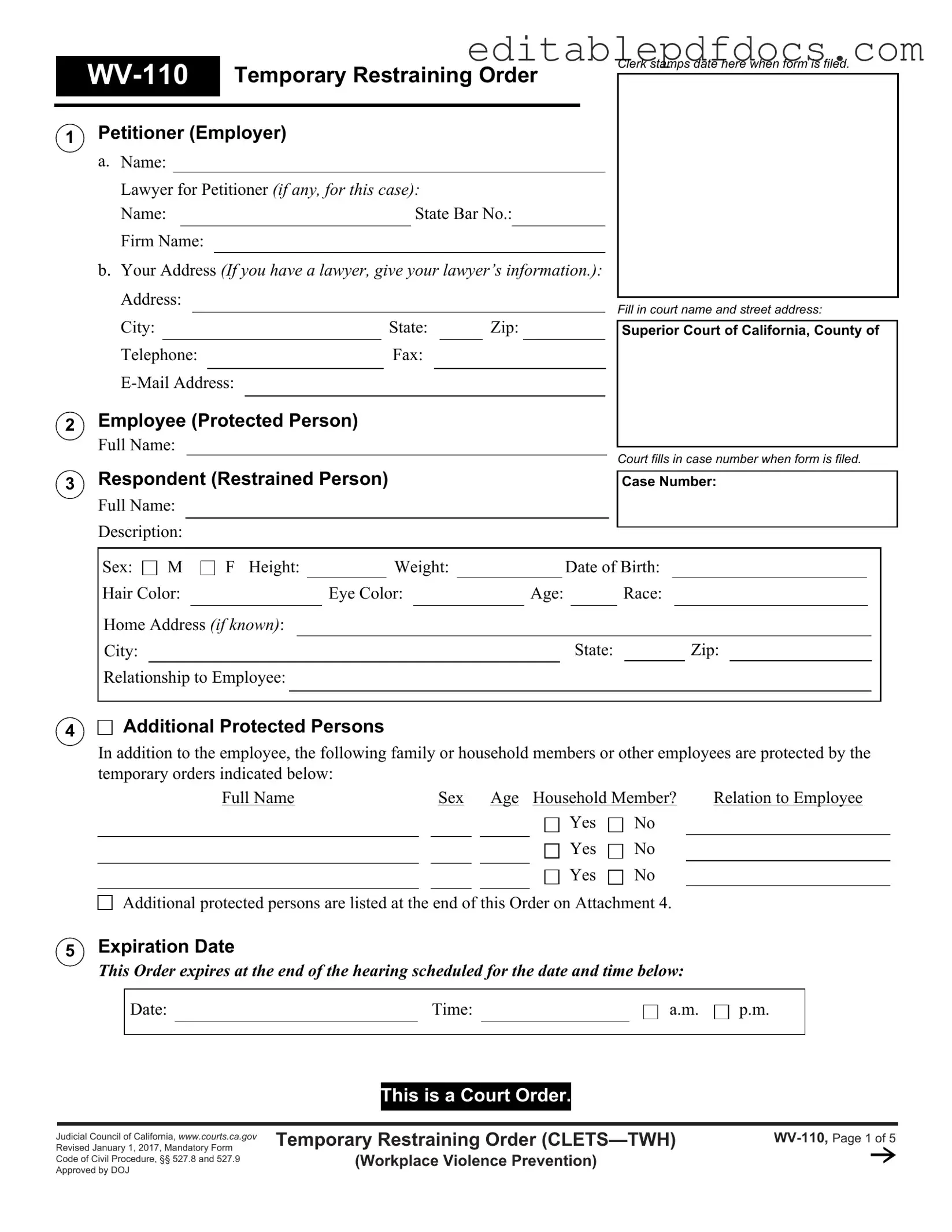Filling out a Fake Restraining Order form can be a daunting task, and mistakes are common. One frequent error is failing to provide complete information about the Petitioner. This includes not listing the full name, address, and contact details. Incomplete information can lead to delays in processing the order or even dismissal of the case.
Another common mistake involves the Respondent section. Individuals often omit essential details such as the full name, physical description, and relationship to the employee. Missing this information can hinder the enforcement of the order and create confusion for law enforcement.
Many people also overlook the section regarding Additional Protected Persons. It is crucial to include all relevant family members or household members who may also need protection. Failing to do so can leave vulnerable individuals unprotected and increase the risk of harm.
When it comes to the Expiration Date, some applicants neglect to specify a clear date and time for the hearing. This oversight can result in ambiguity about the order’s validity, which may complicate enforcement efforts.
Another error involves the Stay-Away Order. Some individuals forget to check all applicable locations where the Respondent must stay away from the Protected Person. This can lead to unintended violations and confusion about the order's boundaries.
People often misinterpret the No Guns or Other Firearms section. They may not understand that they must not only relinquish firearms but also provide proof of compliance to the court. Failure to file this proof can result in serious legal consequences.
Additionally, some applicants mistakenly believe that the order is automatically enforced without notifying law enforcement. It is essential to ensure that the order is entered into the California Restraining and Protective Order System (CARPOS) to facilitate proper enforcement.
Another frequent mistake is neglecting to check the box regarding No Fee to Serve. Applicants may not realize that if the order is based on a credible threat, they can have the sheriff or marshal serve the order without charge. This could lead to unnecessary expenses.
Lastly, many individuals fail to attend the hearing after submitting the form. Not appearing can result in a default order being issued, which may not reflect their concerns or needs. Attending the hearing is vital to ensure that their voice is heard and that the order is tailored to their situation.
